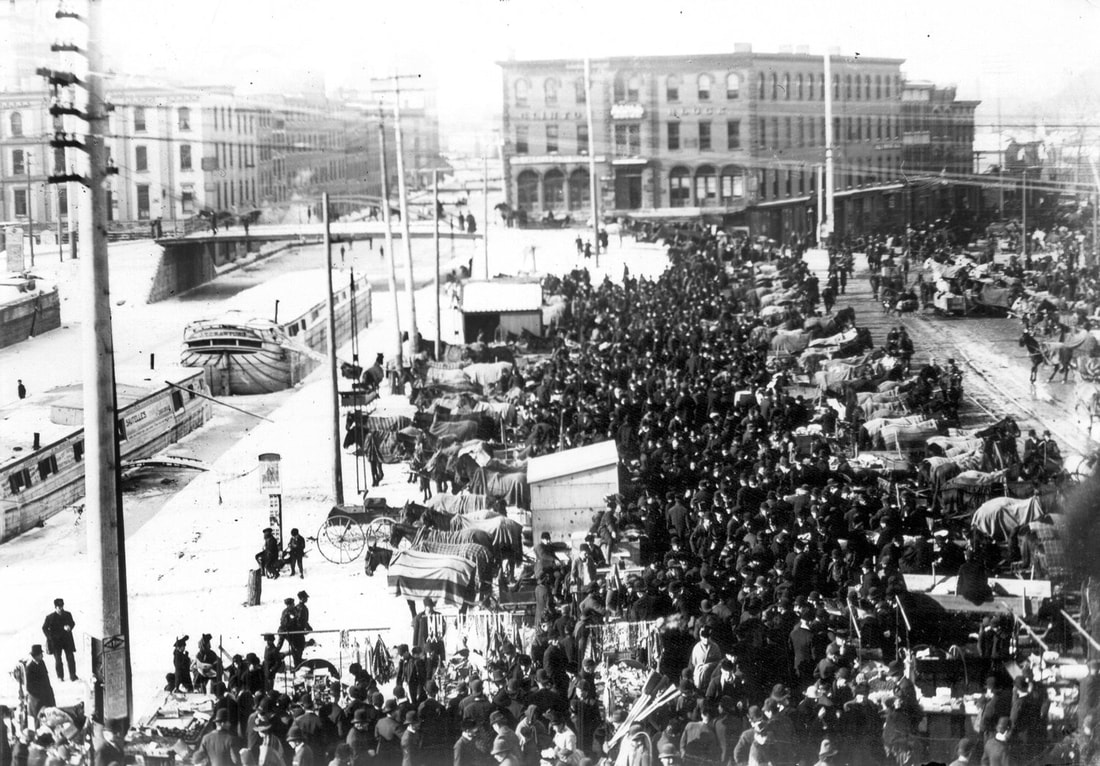 By Contributing Writer; Aimee Whittington Ph.D. Farmers’ markets have a long and multi-faceted history, existing in one form or another for over 5,000 years. Originating in Egypt, the farmers growing in the fertile Nile River Valley came together to sell their products. Unlike modern American farmers’ markets, which are usually held weekly, Egyptian markets took place daily. Each city had a centralized market, selling not only food but supplies and crafts, as well. Some of the products would have looked quite different, such as barley, flax and live animals but the framework is the same. Interestingly, ancient Egyptian markets operated on a trade or barter basis, as the people did not use money. Customers brought finished homemade items made from market goods to barter for necessary supplies. Most exchanges were based on the deben (roughly 3 ounces), an Egyptian unit of measurement. Purchases were placed on one side of a scale and debens added to the other until the scale balanced. This process helped keep trading fair. Massachusetts boasts the first recorded farmers’ market in the United States. Held in Boston, it opened in 1634. appeared in Boston in 1634. 9 other New England markets were up and running by 1700. As the colonies and their cities expanded, so did the need for a consistent supply of foodstuffs and other products. It makes sense farmers’ markets have a presence extending so far back in history. Before the transportation and refrigeration of goods became accessible, communities were far more intertwined with surrounding farmlands. Growth in the urban areas resulted in concomitant growth in agriculture. As cities began to grow into areas previously used for agriculture, farmlands were pushed farther and farther away from the communities they served. Simultaneously, technological advances in storage and transportation opened up opportunities for farms to move even farther out. Grocery stores became an increasingly popular source for produce and goods as early as the 1700’s. In the most densely populated urban areas, farmers’ markets began to disappear and interests shifted to these stores, which offered more of both choice and convenience. Unfortunately, better roads and sustainable refrigeration soon ushered in the spread of supermarkets and wholesalers in all areas of the country, not just the cities. Many small farms and markets were cut out of the food cycle. Shortly after WWII ended, there were only 6 markets in the entire state of California. Luckily, the 1960s and 70s saw an America which was becoming more health-conscious. With a cultural shift away from mass production and mass consumption, farmers’ markets began to appear again. Fresh, healthy, and easy-to-prepare foods became more of a priority for families. And nostalgia played a factor, as the public remembered the quaintness of farmers’ markets, their sense of community and the access to fresh foods they provided. Farmers’ markets experienced explosive growth between 1994-2008. While that growth has definitely leveled off, there are 8500+ markets in the U.S. and $1.1 billion dollars is spent at them annually. A billion dollar business where the practices are a net positive for everyone involved.
0 Comments
Leave a Reply. |
AFM Marketblog
Bringing you organic, grass-fed, pasture-raised, locally-sourced blog posts on a semi-weekly basis from the Amherst Farmers' Market. Archives
July 2022
categories...
All
|

 RSS Feed
RSS Feed
